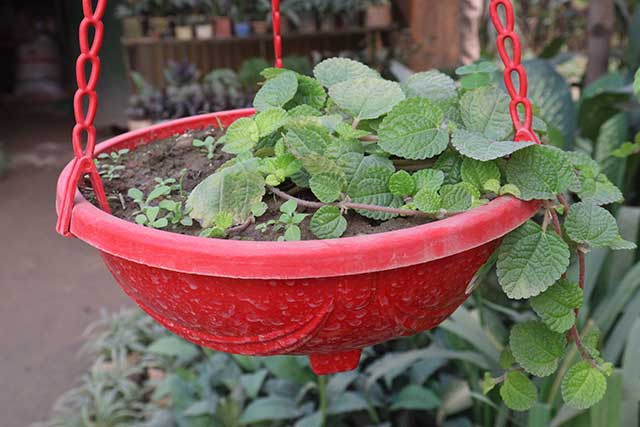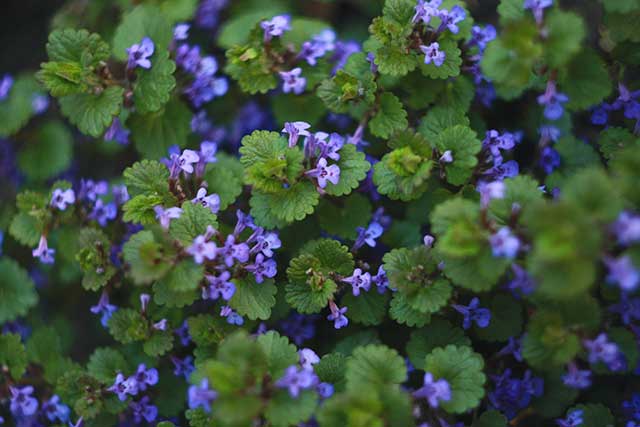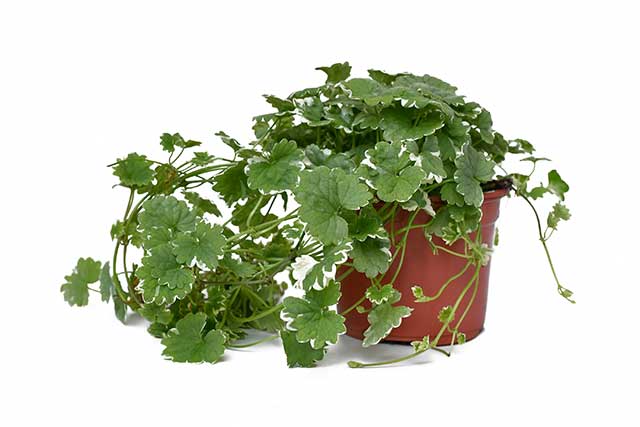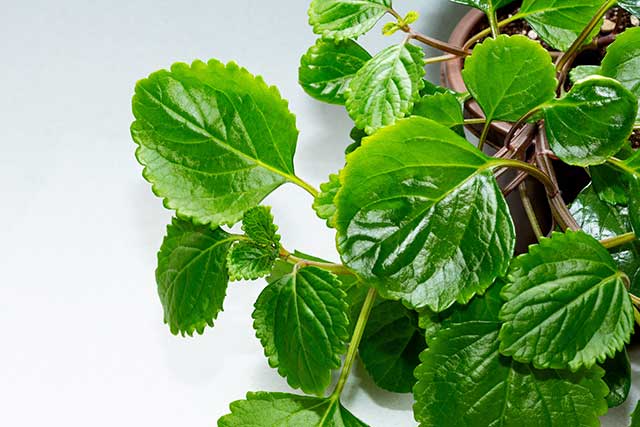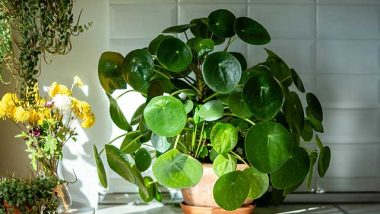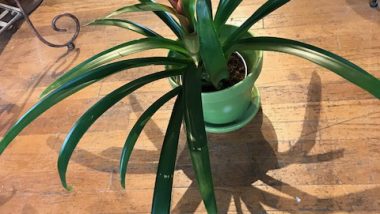Last updated on March 2nd, 2025 at 10:00 am
A Simple Guide for Indoor Plant Lovers
Types of Creeping Charlie. This one is called Glechoma hederacea in the scientific world and is an indoor plant you’ve probably seen (or heard about) if you’re into houseplants. Some call it ground ivy because of how it grows in sprawling, vine-like mats. Fun fact: it’s actually part of the mint family, which explains both its resilience and its fresh, herbal scent. But don’t let its “creeping” name fool you—it’s not just a weed; when cared for indoors, it’s downright beautiful and practical for decor.
Characteristics of Glechoma hederacea
One of the coolest things about Creeping Charlie is how adaptable it is. Let’s break it down:
- Appearance: Its small, round leaves are bright green with scalloped edges, making it super easy to recognize. Some varieties even have a unique variegated pattern.
- Growth Habit: This plant spreads through creeping stems, making it perfect for adding lush greenery to hanging planters or shelf arrangements.
- Aromatic Leaves: When you rub its leaves, you might notice its minty scent, a hallmark of its family.
Types of Creeping Charlie
Creeping Charlie isn’t just a single, straightforward plant—it has a few varieties that stand out for their unique characteristics. Whether you’re looking for a plant to thrive indoors or something decorative to brighten up your space, each type offers something special. Let’s dig into the details.
- Defining Features: Its small, round leaves with scalloped edges are a trademark look. The leaves are vibrant green and grow densely along creeping stems.
- Growing Habits: As part of the mint family, Glechoma hederacea is a rapid grower. It’s often described as a “mat-forming plant” because it sprawls across the surface, making it a great ground cover option.
- Care Tips: If you’re growing it indoors, place it in a spot with bright, indirect light. For watering, keep the soil lightly moist but avoid overwatering—wet feet can hurt this plant. Learn more from Healthy Houseplants’ guide.
This type is often called “ground ivy,” and it’s perfect for easy green additions to your home or garden. Toxic; Common creeping charlie is toxic to pets, especially to cats and dogs.
Swedish Ivy (Plectranthus verticillatus)
Did you know Swedish Ivy is sometimes lumped into the Creeping Charlie family? Though it’s technically a different species, its trailing nature and ease of care make it easy to use as a houseplant. It’s also found at most Nurseries and Garden shops in the U.S.A.
- Relation to Creeping Charlie: It’s similar because of how it grows—vine-like stems and a spreading habit. However, its glossy leaves are rounder and a bit chunkier in comparison.
- Features: Swedish Ivy produces pale lavender or white flowers under the right conditions, adding an extra layer of charm. The leaves also have a lovely, slightly waxy texture.
- Best Conditions: To keep Swedish Ivy happy, provide it with bright but indirect light. While it tolerates moderate light, it’ll thrive best in brighter spaces. Water it when the top inch of soil feels dry. Check out this Swedish Ivy care guide for detailed tips.
This variety suits hanging baskets perfectly, making it a favorite for indoor plant designs. Not generally toxic to pets and humans. Consuming large quantities of this plant will give you and your pet an upset stomach.
Variegated Creeping Charlie
If you’re looking for something a little more exotic, the variegated version of Creeping Charlie could be your pick. It’s a standout variety that’s meant to grab attention.
- What Makes It Unique: Unlike the standard green leaves, this variety features a striking variegation pattern—leaves adorned with creamy white or light yellow edges. The two-tone effect makes it more visually appealing.
- Decorative Appeal: It’s essentially the same plant in terms of growth, but the colorful foliage elevates it to ornamental status. You’ll often see it used in decorative arrangements or hanging baskets.
- Practical Tips for Growth: It enjoys partial shade and grows best in well-draining, consistently moist soil. If you’re careful about lighting and watering, its leaves will stay vibrantly variegated. You can read more about its charm here.
This version of Creeping Charlie will make your collection more visually dynamic, especially if placed next to darker green plants.
How to Identify Creeping Charlie Types
Determining the type of Creeping Charlie in your home or garden doesn’t have to feel like solving a mystery. By paying attention to the little differences in their leaves, growth habits, and even flowers, you can figure it out in no time. Let’s break it into three key areas.
Leaf Shapes and Colors
The leaves on Creeping Charlie have a lot to say about its identity. Most types come with rounded or kidney-shaped leaves, but look closer for subtle differences.
- The common Creeping Charlie (Glechoma hederacea) features small, scalloped leaves in vibrant green. They may look slightly textured, with veins creating a faint sunken effect. For a better look, Friends of Eloise Butler has a helpful reference.
- If you’re checking out a variegated variety, notice how the edges of the leaves have creamy white or pale yellow borders. This two-toned effect really sets it apart.
- Thinking about Swedish Ivy (Plectranthus verticillatus)? The leaves here are glossier and larger, with a smoother appearance overall.
When I’m unsure, I always rub the leaves. They should feel soft but firm, and the scent might reveal a minty touch—it’s a dead giveaway it belongs to the mint family.
Growth Patterns and Habits
Creeping Charlie loves to creep and crawl, thus its name. Each type has its unique way of doing it. This is where observing the plant’s spread and habits can help.
- The standard Glechoma hederacea loves growing in a mat-like fashion, hugging the ground or trailing from pots. It’s a quick grower, so keep those scissors handy if it’s getting wild. You can read more about it here.
- Swedish Ivy, in contrast, holds a more graceful look. It cascades elegantly, making it a favorite for hanging baskets. It grows a bit slower when compared to the wilder Creeping Charlie.
- Watch for the variegated kind to stick closer to the well-lit spots. Its growth is similar to standard Creeping Charlie but can appear sparser in dim conditions.
One fun tip? If your plant seems to be pushing toward your windows or lights, it’s telling you it loves indirect but consistent brightness.
Flowering and Seasonal Changes
A plant’s blooms and how it reacts to seasonal changes can give you big clues. Pay close attention in spring and early summer.
- The classic Creeping Charlie usually blooms in spring, with tiny bluish-purple flowers that remind me of mini trumpets. They pop up in clusters, and you’ll often see them peeking out even in shady areas. Learn more about these blooms on this guide.
- Swedish Ivy flowers differently, producing pale lavender or even white flowers if it gets the right conditions indoors. You might need to be patient though; it’s picky about blooming.
- Variegated Creeping Charlie doesn’t often bloom indoors, but if it does, you’ll see similar dainty flowers to its standard cousin. The focal point of this type remains its vibrant leaves rather than its flowers.
When caring for these plants, remember that cutting back stems before flowering season can also keep their growth more manageable.
Once you get the hang of looking at leaves, growth, and flowers, you’ll be able to tell them apart like a pro! Keep these tips in mind next time you’re facing a Creeping Charlie identification situation.
Caring for Creeping Charlie
Taking care of Creeping Charlie doesn’t have to be a challenge, even if you’re new to indoor plants. It’s a hardy plant, but like any green friend, it thrives when you give it the right care. Let me help you break it down step by step.
Watering and Soil Needs
Creeping Charlie likes its soil to be moist but never soggy. Think of it like cooking pasta—you want it just right, not swimming in water. Water the plant when the top inch of the soil feels dry to the touch. During cooler months, it needs less water, so check the soil before pouring that watering can.
For soil, focus on what drains well. Creeping Charlie loves soil that allows water and air to flow freely. A light potting mix with good drainage works like a charm. Aim for a neutral to mildly acidic pH range (6.0–7.5). Bonus tip: Make sure your pot has drainage holes to avoid root rot! For more detailed tips, this watering guide is helpful.
Pruning and Maintenance
To keep your Creeping Charlie in top shape, regular pruning is key. If it starts looking wild or leggy, grab some scissors and trim back those overgrown vines. Always cut just above the leaf nodes—this not only keeps the plant looking tidy but also encourages fuller, bushier growth.
Prune during spring or early summer for the best results. Remove dead leaves or yellowing stems as you go. If it’s really out of control, you can cut it back hard, leaving just a couple of inches of stems—it’ll bounce back, trust me. Pinching the tips regularly can also help maintain that dense, shrub-like appearance. For step-by-step pruning advice, check out this guide.
Caring for Creeping Charlie is all about balance: a bit of water, some indirect sunlight, and a regular trim. It’s one of those plants that rewards your effort by looking lush and vibrant all year round. Just a little TLC goes a long way!
A Perfect Fit for Small Spaces
Not everyone has room for a giant fiddle leaf fig or a sprawling monstera. Creeping Charlie is compact but still lush, making it ideal for apartments, dorm rooms, or any small living area. Because of its trailing habit, you can pop it into a hanging basket, let it cascade from a shelf, or even use it as a filler for other plant arrangements. It grows to fit the space you give it without overwhelming the room, keeping things stylish yet manageable.
Easy for Beginners
We’ve all had that one plant we accidentally killed. Creeping Charlie forgives your mistakes—a real beginner’s best friend! It doesn’t put up a fuss if you forget to water it occasionally or if the lighting isn’t perfect. As long as you give it moderate care, like bright indirect light and a little hydration when the soil feels dry, it’ll reward you with vibrant green vines. Trust me, you won’t drown in plant-care stress with this one.
For a full care breakdown, check out this guide.
Budget-Friendly Beauty
You don’t need to spend a fortune to bring greenery into your home, and Creeping Charlie proves that. It’s an affordable plant that grows quickly, so you’ll get your money’s worth in no time. And hey, if it starts to outgrow its pot, you can snip stems and propagate new plants for free! That means doubling or even tripling your greenery without spending another dime. Who doesn’t love a good deal?
When you think about it—cleaner air, ease of care, decorative appeal, and budget-friendly growth—Creeping Charlie really checks all the boxes for the perfect indoor plant. If you’re curious about how others care for and love this plant, here’s a great story about its charm.
Conclusion
Creeping Charlie is more than just a resilient trailing plant; it’s a charming and practical choice for any indoor space. From the classic Glechoma hederacea with its lush, green foliage to the eye-catching variegated variety or the graceful Swedish Ivy, there’s a type for everyone. Each brings its own vibe, whether you’re after hardy greenery or decorative flair.
If you’re on the hunt for a low-maintenance plant that doesn’t just sit there but actively elevates your space, give one of these types a try. They’re simple to care for, fun to style, and undeniably satisfying to watch grow. Which one will you pick for your home? Let me know—I’m curious to hear your favorite!

Greenhouse Manager, Master Gardener, and Webmaster.
If you have any questions or enjoyed this post, feel free to share your thoughts in the comments below.


